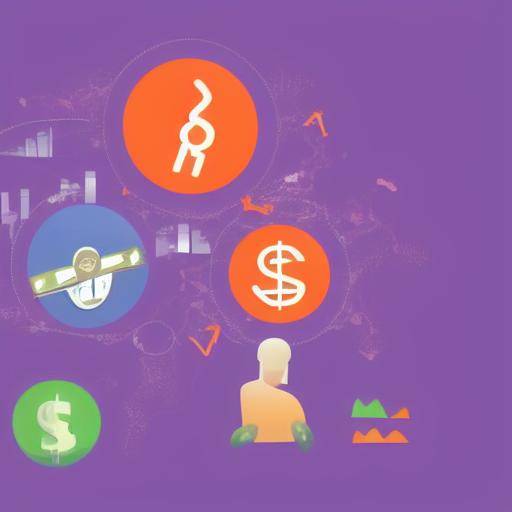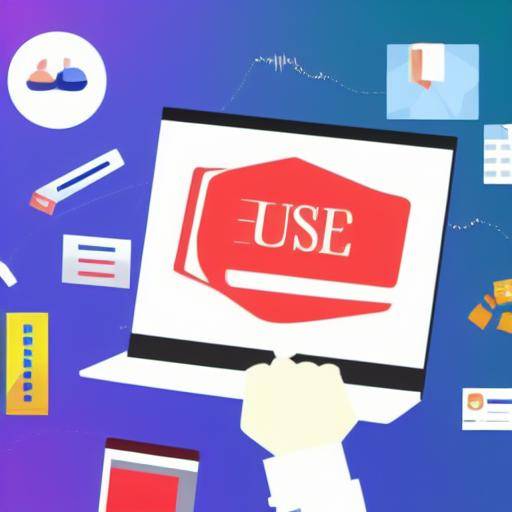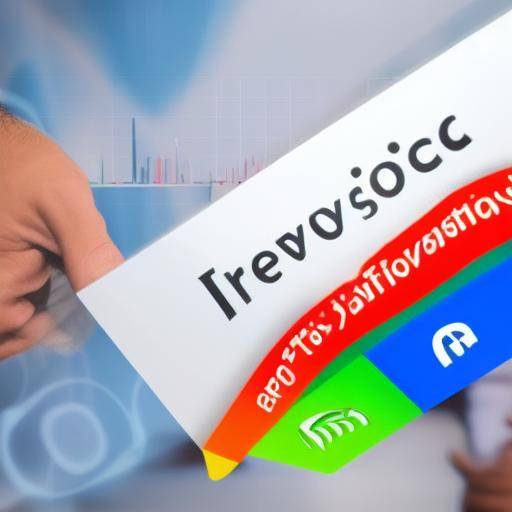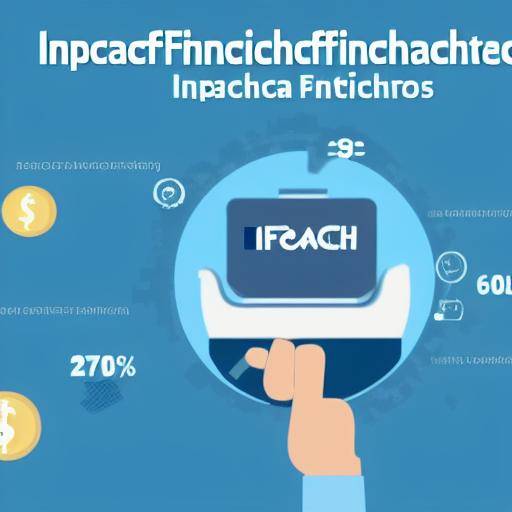
Technological advances have revolutionized the way we conduct many daily activities, including the management and evaluation of fast loans. With the growing demand for agile financial services, applications designed to provide efficiency and control in this area have become increasingly popular. In this article, we will explore in detail how technology has transformed the management and evaluation of fast loans, analyzing their efficiency, the control they provide and provide practical advice to make the most of these tools.
Introduction
In the current digital era, applications to manage and evaluate fast loans have become key allies for individuals and companies seeking to optimize their financial processes. The combination of technology and finance has made it easier to obtain loans and simplify their evaluation, providing significant benefits for those who require quick access to capital. In this article, we will explore how technology has transformed this field, analyzing both its efficiency and the control it provides to users.
History and Background
Applications to manage and evaluate fast loans have their roots in the digitization of financial services. With the emergence of online platforms and fintech, the need for quick, safe and efficient solutions for loan assessment and management became clear. This evolution has allowed financial institutions and private lenders to offer agile options to applicants, optimizing response times and reducing the bureaucracy associated with traditional loans.
In the last decade, with the advancement of artificial intelligence, automatic learning and process automation, applications dedicated to loan management and evaluation have experienced exponential growth. The ability to analyze large volumes of data in real time, assess credit risk more accurately and provide users with a personalized experience has been fundamental to the development of these tools.
Analysis in Deep
Technological Benefits
Technological applications have made it possible to streamline lending processes, reducing the time previously involved in collecting and submitting documentation. They also provide applicants with the convenience of making applications from anywhere, eliminating the need to move to physical branches. The integration of advanced algorithms has also improved precision in credit risk assessment, which can result in greater accessibility for those with diverse credit profiles.
Current Challenges and Trends
Despite their many benefits, applications to manage and evaluate fast loans also face challenges, such as the need to maintain high standards of cybersecurity and data protection. The accelerated growth of these applications has generated a debate on the regulation and supervision needed to ensure transparency and regulatory compliance. In terms of trends, the customization of user experience, the incorporation of blockchain to increase the security and expansion of services through mobile devices are areas that are currently driving technological development in this area.
Comprehensive review
Exploring the practical use of these applications, together with examples of good practices and case studies, is critical to understanding their impact on fast loan management and evaluation. Companies and financial entities in various sectors have adopted these solutions to accelerate their financial decision-making processes, optimize loan portfolio management and improve customer experience.
The control that these applications provide about financial processes is also key to users. The ability to monitor the status of your requests, receive real-time updates and access detailed information about your loans provides a level of autonomy and transparency that was previously unavailable. In addition, the ability to make payments and manage loan reimbursement in a convenient manner through these applications has greatly simplified the experience for borrowers.
Comparative analysis
By comparing the technology, efficiency and control provided by these applications with traditional methods of loan management and evaluation, a clear difference can be seen in terms of speed, accessibility and transparency. While conventional approaches are often associated with long procedures, comprehensive documentation and manual processes, technological applications offer a streamlined, intuitive and highly customized alternative. The ability of users to quickly complete the application process, actively monitor their progress and access detailed information about their credit situation is a clear reflection of the evolution that these tools have brought to the credit sector.
Practical Tips and Recommendations
To make the most of the applications to manage and evaluate quick loans, it is crucial to understand how to make the most of the features and features they offer. Some practical tips include:
- Use simulation tools to understand the impact of different scenarios on your loans.
- Keep your financial information up-to-date and verified to facilitate risk assessment.
- Take advantage of notifications and alerts to stay informed about the status of your loans and expiration dates.
- Familiarize yourself with the security and privacy policies of applications to ensure the protection of your data.
Industry Reflections and Expert Reviews
Expert views in the field of financial technology are critical to understanding the impact and future potential of these applications. Fintech experts, financial analysts and innovation leaders have expressed their vision of the role that applications play in transforming the financial landscape. Their inputs provide valuable information on the opportunities and challenges facing the sector, as well as future trends that can influence the development and adoption of these technologies.
Cases of Study and Applications in Real Life
It is crucial to analyze real case studies that illustrate how these applications have had a concrete impact on users' experience and the efficiency of financial companies. These success cases can come from various sectors, showing the versatility and scope of these tools. By exploring how these applications have optimized processes, reduced costs and improved customer satisfaction, you can clearly appreciate their value in the current business context.
Future Trends and Predictions
Continuous evolution of financial technology suggests an exciting future for applications for rapid loan management and evaluation. The integration of predictive analysis tools, the expansion of artificial intelligence capabilities for credit risk assessment and the development of inclusive financing solutions are just some of the trends that will shape the financial landscape in the coming years. The growth of digital services and the demand for agile financial solutions also point to a scenario where these applications will play an even more prominent role.
Conclusions
In conclusion, technology applications dedicated to the management and evaluation of quick loans have redefined how individuals and companies access and manage financing. Its ability to deliver efficiency, control and transparency is essential for the optimization of financial processes. With the evolving technological and financial landscape, these applications represent an opportunity to boost financial inclusion, improve user experience and catalyse digital transformation in the credit sector.
FAQs
1. How do applications ensure the security of the financial data of users?
Applications to manage and evaluate fast loans implement advanced security protocols, such as end-to-end encryption, multi-factor authentication and fraud protection measures, to ensure the security of users' financial data.
2. What role do regulations play in the development and use of these applications?
Regulations play a crucial role in the financial application sector, ensuring consumer protection, transparency in operations and compliance with security and privacy standards. Compliance with the relevant regulations is fundamental to the trust of the user and the long-term sustainability of these applications.
3. What specific advantages do these applications offer compared to traditional loan application and evaluation methods?
Technological applications offer significant advantages, such as faster response times, remote access, simplified processes and greater transparency in the state of loans. The ability to monitor real-time progress and perform transactions in a convenient manner are distinctive features that improve the user experience.
4. How can borrowers use these applications to improve their credit profile?
By maintaining good management of their loans through these applications, borrowers can demonstrate responsibility and solvency, which can have a positive impact on their long-term credit profile. In addition, access to simulation and financial management tools allows them to make informed decisions to improve their credit situation.
5. What role do artificial intelligence tools play in evaluating credit risk through these applications?
The artificial intelligence tools allow you to analyze large volumes of data efficiently, identify patterns and trends in credit behavior, and evaluate the risk more accurately. This provides financial institutions with valuable information to make informed decisions in terms of loans and credit.
6. What are the emerging trends related to applications for managing and evaluating quick loans?
Some emerging trends include the integration of blockchain technologies to improve security and transparency, the adoption of API-based financial services and the expansion of inclusive financing solutions that address the needs of underserved segments. The growing use of predictive analysis and machine learning is also influencing the evolution of these applications.
In short, applications to manage and evaluate fast loans represent a powerful application of technology in the financial sector. Its ability to provide efficiency, control and transparency is redefining the way in which financing is accessed and managed, both individually and corporately. With the continued technological advance and demand for agile financial services, these applications are intended to play an even more significant role in the global financial landscape.






















































